👋 I’m so glad YOU are here. Are you looking to also get your partner prepared? This is for BOTH of you. Couples just love it and I know you want to both feel prepared!
You may think that the things that cause the most trauma are the kinds you see on TV or the news, but that truly isn’t the case. Today I’m going to talk about what people find traumatic in L&D and how to make changes.
I am a big believer that while a lot of this change needs to happen on the provider level — but, this article is for you, the patient (as that’s who reads my articles, for the most part). So, I want to talk about what YOU need to know about it (and how YOU can prevent it).
Before we get started, I’m going to talk a little bit about birth plans — but I have a free class where I teach you the RIGHT way to make them here:
I also discussed this in a recent podcast episode:
What is Trauma?
Trauma is a long-lasting emotional response to a traumatic event.
In the study I will talk more about, they defined it as:
Women’s subjective feelings; intertwined painful emotional experiences; originate in the birth process and last until postpartum.
Read the full study here.
I think most often we think of trauma as something BIG — something we’d call 911 for if we were at home. But trauma is defined by each individual.
For instance, my son was in a car wreck and was safe (not so much for the car) but every time I got a phone call from him after the event I thought he was calling me to tell me he was in a wreck and I’d have a mini panic-attack each time I saw his name on the caller ID.
I was traumatized by that event, even though everyone was safe and it wasn’t a huge deal. For me, it was. For him, it was — he no longer makes left hand turns.
There are lots of events that could cause trauma in the hospital, and specifically in labor and delivery. We will be diving into those more.
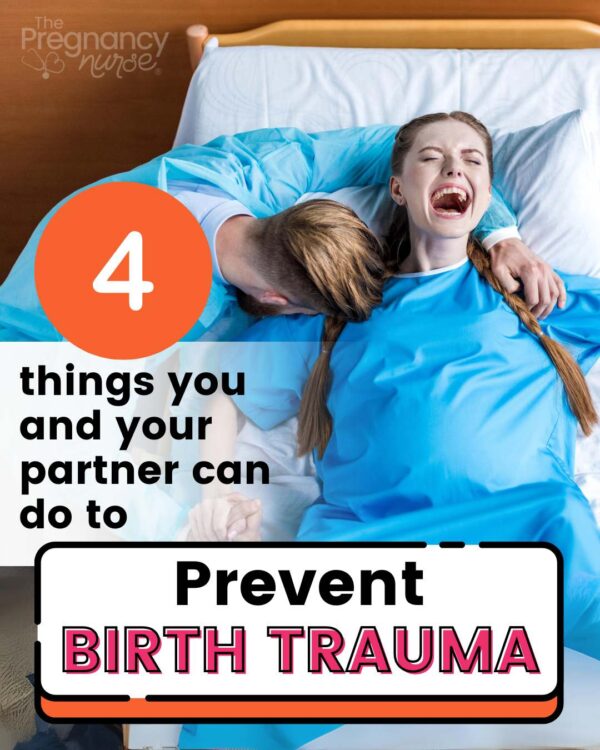
How Many People Experience Trauma?
Let’s talk about how prevalent trauma is in those who have given birth….
I’ll be citing this study — and big thanks to Jen Hamilton (@jen_hamilton on Tiktok) for opening my eyes to this one — and I thought it would make a great article to inform you guys. She’s a great follow too. 🙂
A few of these are direct quotes from the study:
4% of postpartum women in community samples developed PTSD following a traumatic birth experience, compared with 18.5% in high-risk samples — meaning women who needed increased interventions were more likely to experience trauma with their birth (this one makes sense to me).
For those who had a traumatic previous birth — 80.2% of participants reported having experienced clinically significant fear of childbirth. Totally makes sense — but are we working through this together as birth team? Likely, not.
The prevalence of traumatic childbirth experience was 37% in one of the studies — they showed that risk factors for a traumatic birth was 1) A lack of exercise during pregnancy (this one surprised me). 2) A fear of childbirth 3) Lack of pain relief during birth.
Another study showed 20% of people had traumatic births — and risk factors in that study included:
- not enough support after delivery (can I get an amen for that one)
- they weren’t listened to during delivery
- felt like there wasn’t enough medical support during the first stage of labor.
- and “pre-labor training classes considered inadequate” — meaning they had poor prenatal education (this makes the prenatal class teacher in me 😭).
One of the studies also showed that women who experienced birth trauma had less kids, or took longer to have their next baby — that makes total sense.
In trying to get an idea of how many people experience this, this article from AJOG (American Journal of Obstetrics and Gynecology) said that between 9-50% of patients report their birth was “Traumatic” (that’s a really broad span).
I also loved that they shared this fact:
We Don’t All Find the Same Things Traumatic
I liked that the study pointed out that we don’t all find the same things traumatic. Some women may need an urgent cesarean section, and NOT find that traumatic (because their birth team communicates it so well to them, and they have been well-prepared).
BUT some women would’ve needed an urgent cesarean and found that extremely traumatic. It really varies.
So, just a reminder we can’t compare trauma. Honestly, this is one of the problems I have with birth story comparisons — but I digress.

What did women find traumatic in birth?
They outlined some common themes that women found traumatic in birth:
Fear and Anxiety
I hear so often how people on my posts on social media are so afraid of birth — even before they’ve started. When you START OUT afraid, you’re starting on the wrong foot. I can’t tell you any more strongly to get prepared in a class that will take away that fear and anxiety NOW. I recommend this one.
I would also recommend talking with your provider about your fear and anxiety so they can explore if there is anything deeper or any help they can give (or possibly recommend someone to talk to).
Helplessness and despair
This people felt like there wasn’t anything they could do to make their birth better.
They also likely feel like the decisions aren’t in their hands. I hate this. I think a lot of this is on providers, but I want to remind you that you are ALWAYS in the driver’s seat in your birth. Keeping that always in mind (and having your partner know that too) can help avoid this feeling. This really reminds you of that for each stage of labor.
Deprivation of dignity
This was people feeling like we violated their privacy and likely also just didn’t have control of their own body. I think this tends to come from:
- Not asking if we can do certain procedures (like a vaginal exam) — instead just telling (or even worse not even saying anything)
- Not giving patients options like wearing a bra, or their own gown or even underwear in labor. Let them call the shots.
Neglected and abandoned
When I first read this I thought that patients felt alone — like staff wasn’t in there enough. But it was more about not feeling human — getting support, communication, and attention.
I gotta say that in my intermittent auscultation post I really thought about how often we treat the monitor instead of the patient, and IA stops us from doing that. I think that would help so many of these factors (obviously, in low-risk patients). Read that post about it if you want more info!
Loss of Control
This seemed to be a common theme in a lot of these. The women just didn’t feel like they were in the driver’s seat of their birth.
I think, as birth workers, we automatically feel like there is so much loss of control already in L&D it’s not our fault — but the reality is even giving patients control over things like:
- What lighting they’d like in their room
- What they’d like to wear
- Where they’d like their IV (if it’s an option)
They feel like they’re more in control in an uncontrollable situation.
And to you the patients, take back that control. Ask if there are options if you’d prefer something else. Sometimes by showing us you’d like choices it reminds it to offer them to everyone!
Want to know more about choices in labor — check out these posts:
- The Magical Saline Lock: How It Can Help
- Should You Let Your Provider Break Your Water?
- Can You Refuse A Urinary Catheter During Labor
- What To Wear For A Cesarean Section
- Tips To Saying No To Your Provider
Model Case
They shared a model case in which most birth workers would have felt that things went great during birth. But a few instances really caused trauma for her (keep in mind, mom & baby were both healthy and well throughout & after birth):
- She wasn’t asked about a cervical exam, she was just told what to do
- A student walked in during the exam which brought-up previous sexual traumas (and that wasn’t addressed)
- After baby was born all attention went to the baby, and she felt abandoned.
Because of that her distress heightened, she didn’t feel safe contacting anyone and then had further anxiety/distress with her next pregnancy. And thankfully, she went to counseling at that point.
What we learn from this:
Ok, what do we learn from this. It is honestly often the very small things that happen in labor that cause these feelings, and they can last a really long time.
Here’s a fact:
I don’t think anyone in that model case did anything on purpose to hurt her.
But our actions did, and we can all learn from it.
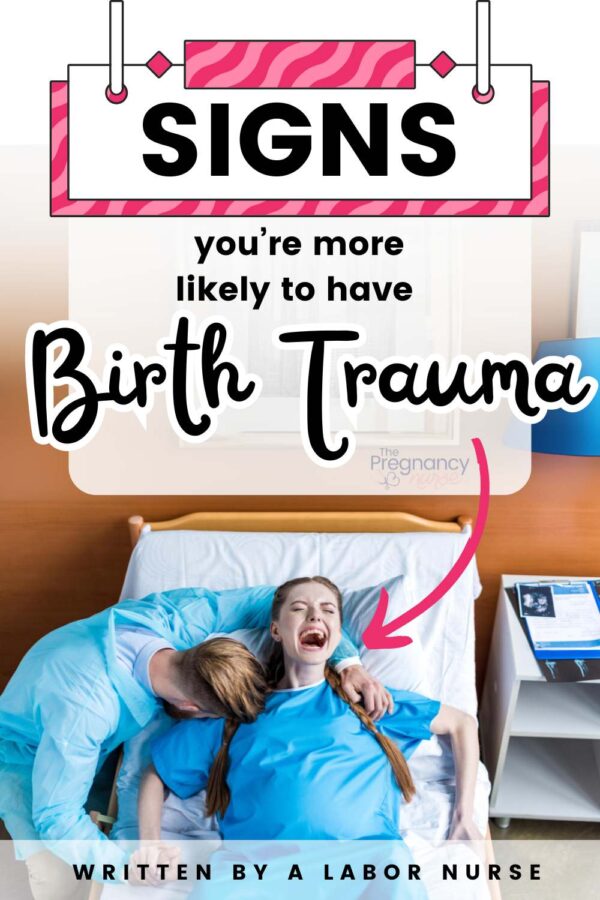
Any Risk factors for birth trauma?
We’re always looking for risk factors for poor outcomes — so, here’s the (long list) for risk factors for birth trauma:
The study outlined a few they saw in the patients prior to birth:
- Single
- Low-income
- First baby
- Living in the city center (vs suburbs or rural areas)
- Insecure attachment style
- High health anxiety
- Fear of childbirth
- Disbelief that they can cope with labor pain
- Previous sexual trauma
- Previous physical or mental health issues
- Existing symptoms of depression and anxiety
- Fertility or complex pregnancy issues
- Family history of problems during labor
- Unplanned pregnancy
- Insufficient prenatal care and training
- Societal pressure on motherhood
- Lack of exercise during pregnancy
Here are some found in their birth experience:
- Severe pain or physical discomfort
- long labor
- Rapid birth process
- Unnecessary medical intervention
- Physical restrain during birth
- Cesarean sections (both emergency and otherwise)
- Delivery with forceps or vacuums
- Separation from baby after birth (most likely to the NICU) & medical complications in baby.
- Medical complications for mom
- Unhappy with baby’s gender
- Preterm delivery
- Baby’s death
- Partner being absent or unsupportive
- Unpleasant birthing environment, equipment or rules
- Tense atmosphere during birth
Here’s a few directly from the birth team:
- Poor communication or explanation
- Incompetent medical staff
- Negative attitudes or words
- Using mothers as training for hospital staff (student doctors or nurses)
- Prioritizing work agendas (getting things done) rather than what the women wanted.
The study also goes on to talk about what types of complications these can have on life after birth as well (which is beyond the scope of this article).
Ways to Address This by Providers:
I’ll give my thoughts in a bit, but they mentioned a few ways to address these issues (and you can advocate to get these things for yourself too — it’s not all up to the staff):
- Avoid unnecessary medical intervention
- Relieve labor pain adequately
- Create a comfortable environment
- Allow the woman’s partner to accompany her
- Adequate communication and explaining what’s going on/happening
- Listening to patients to meet their expectations
- Debrief with patients after birth to address any concerns right away
- Skin to skin contact with baby postpartum (if the patient prefers that)
The study talks about skin to skin a few times, but I think it’s important that that’s what the mom wants. Many feel so out of control after birth, trying to hold the baby on their chest is just one. more. thing. — so I think it’s important to give people control of any aspect (and that even includes ways we’re trying to help).
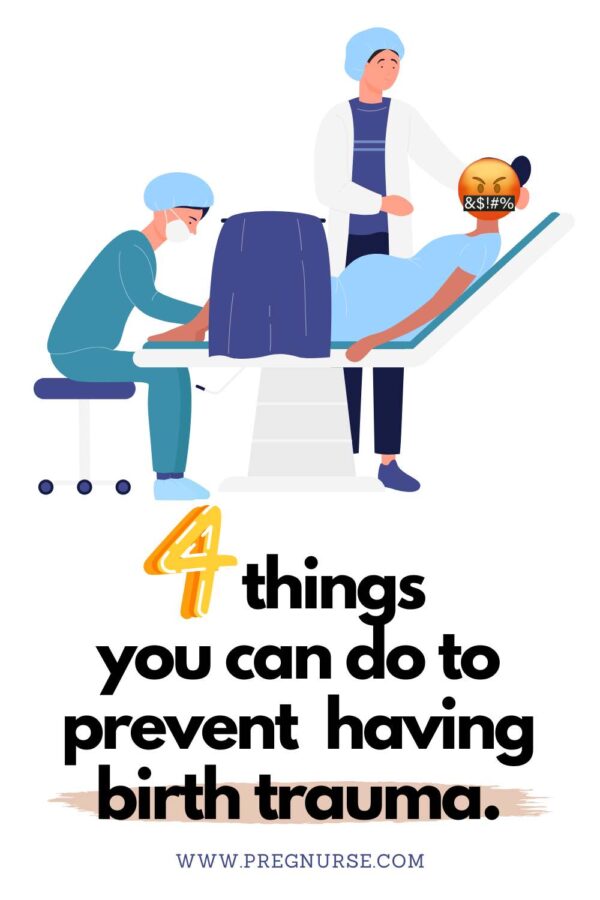
What can YOU do as a patient?
I want to give you 4 things you can do as a patient:
Get Prepared
Being afraid of birth to start with was one of the major triggers for birth trauma. So, get prepared in a way that doesn’t INCREASE your fear, but makes you feel more confident and prepared.
However, there’s a lot people seem to do wrong for this one…
- Thinking that social media or reading a few articles is enough
- Doing your “own research” on a few topics (let’s face it you’re not doing research — you might be reading it, but a few topics isn’t enough — you’ll never be researched enough to not trust your providers)
- Not involving their partner in the preparation.
I recommend this class. It has everything you need in one place (including breastfeeding, nutrition, baby care and baby sleep if you want to go that far). It:
- Covers the rest of your pregnancy, labor, birth and postpartum life with realistic expectations of what to expect
- Prepares you for what other people find traumatic (like what happens if your baby’s heart rate dips — which isn’t uncommon in labor at all)
- Includes what studies say to help you make up your own mind.
- Was created with including partners in mind — it’s engaging so you both learn instead of just “checking a box”
Did I mention it only takes a few hours? It isn’t meant to take over your life (good thing, because I know you’re busy)
Have you checked a birth class off your to do list✅? I have a few I recommend:
❤️ Best class for couples {per BabyList}
👩💻 Best class available on demand
⚡ Best class JUST for pain management
👶 Best Postpartum-Only Prep
❤️🧡💛💚💙💜 My favorite class is here.
Now is the time to get started!
Create a Birth Plan (but don’t plan on it)
So often we ask questions and we sort of get blank stares and people just aren’t sure what to say.
A birth plan is created to both help us but also YOU know what you want during birth — so you can advocate for that, rather than the blank stares.
Honestly, the blank stare means we sort of have to go ahead with what most people want until you stop us. And while that can create trauma, we also have to keep going with your labor — it really puts the staff in a hard place.
Yes, birth is a business and you are taking up a room that could go to someone else (sometimes, not always) — so, being prepared with what you’re hoping for helps all of us.
I also think inflexibility in your birth plan can be tied to trauma as well. You do NOT want a C-section birth, and it ends-up happening that way can also lead to trauma because of your expectations, so make sure when you create the plan you’re willing to also be flexible. Mother nature has her own plan.
Advocate, Advocate, Advocate
You need to be telling us what you want. If your nurse comes in and says “I’m going to do a cervical exam” (or worse, just pulls back the covers) say — hey, what’s going on or WHY do I need that?
When you advocate for yourself it helps remind your providers know you want that. You’re training them to be better staff.
Partners can also be AWESOME at this. They can be your guardian — as long as they’re well-trained.
Debrief
Did something go awry at your birth? Ask all the questions. We really don’t mind and we want to ease any fears you have. A few thoughts on this:
- Providers definitely don’t want to deluge you with information, so they don’t often volunteer this — you have to ask.
- Providers may have concerns about liability if something went “wrong” — so they may dance around topics, although it shows this doesn’t help any legal cases, it often makes them worse.
If I have providers reading this — you can ask simple questions like, “Do you have any questions about how your birth went” as you’re putting monitors away or cleaning up the room. It at least opens the doors to getting those traumas opened up and cleaned out before they fester.
Your questions may come-up postpartum, on the postpartum floor or after baby is born.
I can’t recommend any more to ask your providers about them. If you’re still in the hospital ask your nurses (and ask that they ask the labor nurses if they’re not sure). If you’re home, ask your provider at your visit. Make that list of questions you want to go through on your phone again — just like with your prenatal appointments.
BONUS TIP: Exercise!
I’d already made up all the graphics for this article saying “4 things” but as I re-read it I was struck by how exercise came-up a few times. Honestly, I’m not sure how it integrates, but I’m going to keep this one on the back-burner and hopefully have some ideas for you (backed by research) soon — but I think it may:
- Help open that pelvis (vs sitting at a desk all day)
- Remind you that you can do hard things
- Test your body frequently, so it’s not as tested by labor?????
I honestly have no idea — but I think exercise can be amazing during labor. One of my favorite exercise coaches is pregnant as I write this. You can check her out here — her channel is Kaleigh Cohen Strength.
And finally — not so much as prevention, but some good advice….
Don’t Avoid Therapy
Labor can have just bad stuff go down. Like an accident, stuff just happens. Talking it over with a therapist can be so helpful and can prevent issues down the line, especially with your next pregnancy.
However, if you’ve had birth trauma, be sure to get that birth class on that next baby. It will certainly pay-off!
Final Thoughts:
While birth trauma isn’t your fault (and sometimes isn’t anyone’s “fault” — stuff just “happens”). There ARE things you can do to minimize it. I would encourage you to take those steps now, so you have an amazing birth and aren’t stuck traumatized when you need to move-on with your life and baby.
The Online Prenatal Class for Couples is the EASY way to get you prepared for birth. Our studies show that people feel over 50% less anxious about birth (wouldn’t that feel great) and feel over 60% more prepared after the class. I want that for you. Come join us!
Looking to get prepare for your birth? I have some easy options for you!
~~~~~~~~
– Worried you’re missing something? Grab my pregnancy planner so you don’t miss a thing!
– Thinking about an induction? Grab Inductions Made Easy to feel prepared in just 20 minutes!
– Wondering how to get that baby OUT? Grab Going Into Labor Made Easy so you know how to (and not to) do it!
– Postpartum got you anxious? Check out Postpartum Care Made Easy so you can stay SAFE even when all your attention is on that little on.
🚨 AND if ALL OF IT has got you on edge The Online Prenatal Class for Couples is perfect for you — You’ll feel so ready before you even know it!
~~~~~~~~
No matter WHERE you are at in your pregnancy journey, we have resources that can help!
Want to do a vibe check before diving into the whole thing with me? — check out my free labor pro tips. It’s your first step toward getting in the driver’s seat of your birth.
Sources:
Sun X, Fan X, Cong S, Wang R, Sha L, Xie H, Han J, Zhu Z, Zhang A. Psychological birth trauma: A concept analysis. Front Psychol. 2023 Jan 13;13:1065612. doi: 10.3389/fpsyg.2022.1065612. PMID: 36710822; PMCID: PMC9880163.
Childbirth-related posttraumatic stress disorder: definition, risk factors, pathophysiology, diagnosis, prevention, and treatment
Antje Horsch, PhD; Susan Garthus-Niegel, PhD; Susan Ayers, PhD; Katharina Hartmann, PhD;
Edi Vaisbuch, MD; Joan Lalor, PhD;
Published:January 09, 2024 DOI: https://doi.org/10.1016/j.ajog.2023.09.089
American Journal of Obstetrics & Gynecology EXPERT REVIEW| VOLUME 230, ISSUE 3, SUPPLEMENT , S1116-S1127, MARCH 2024


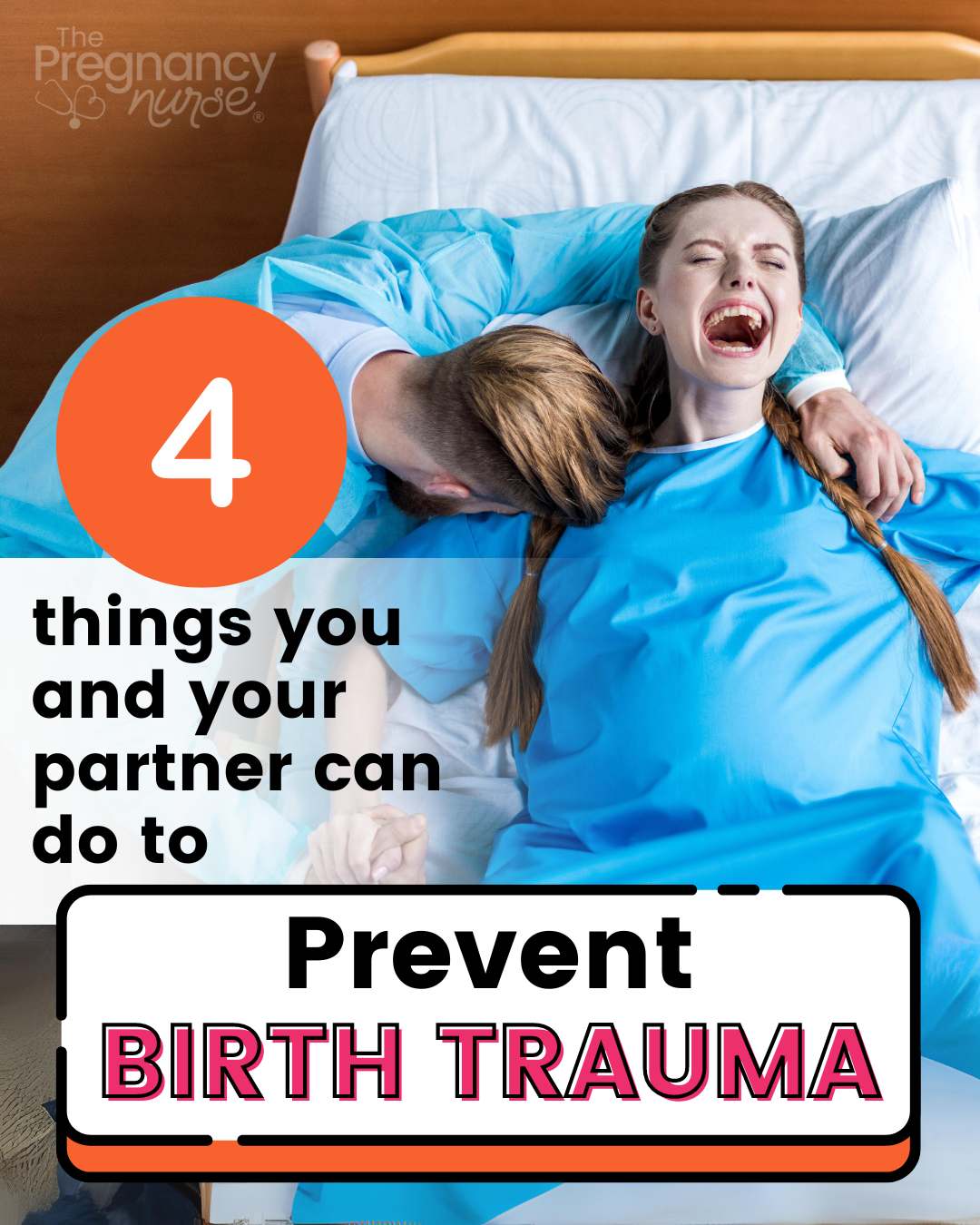
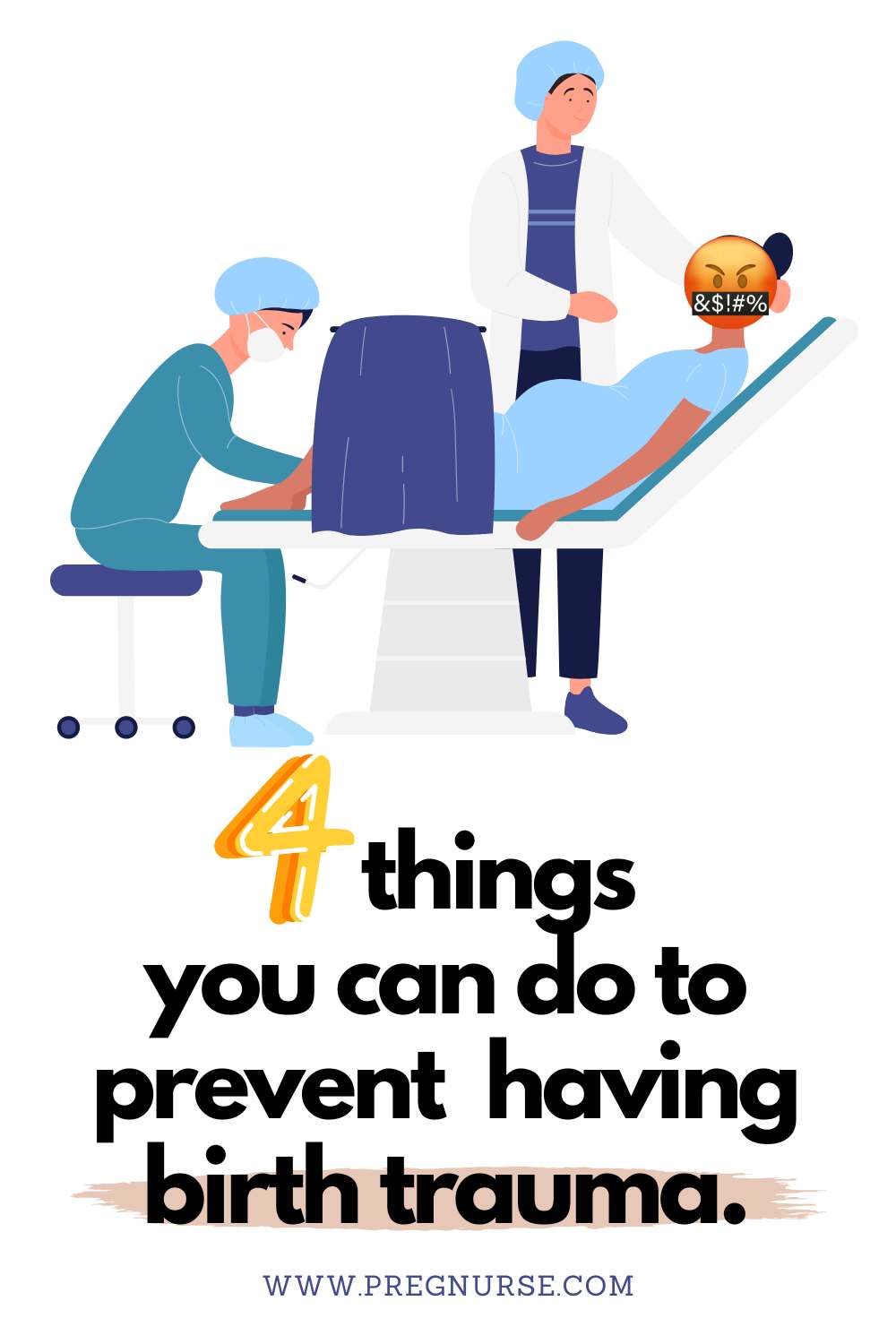
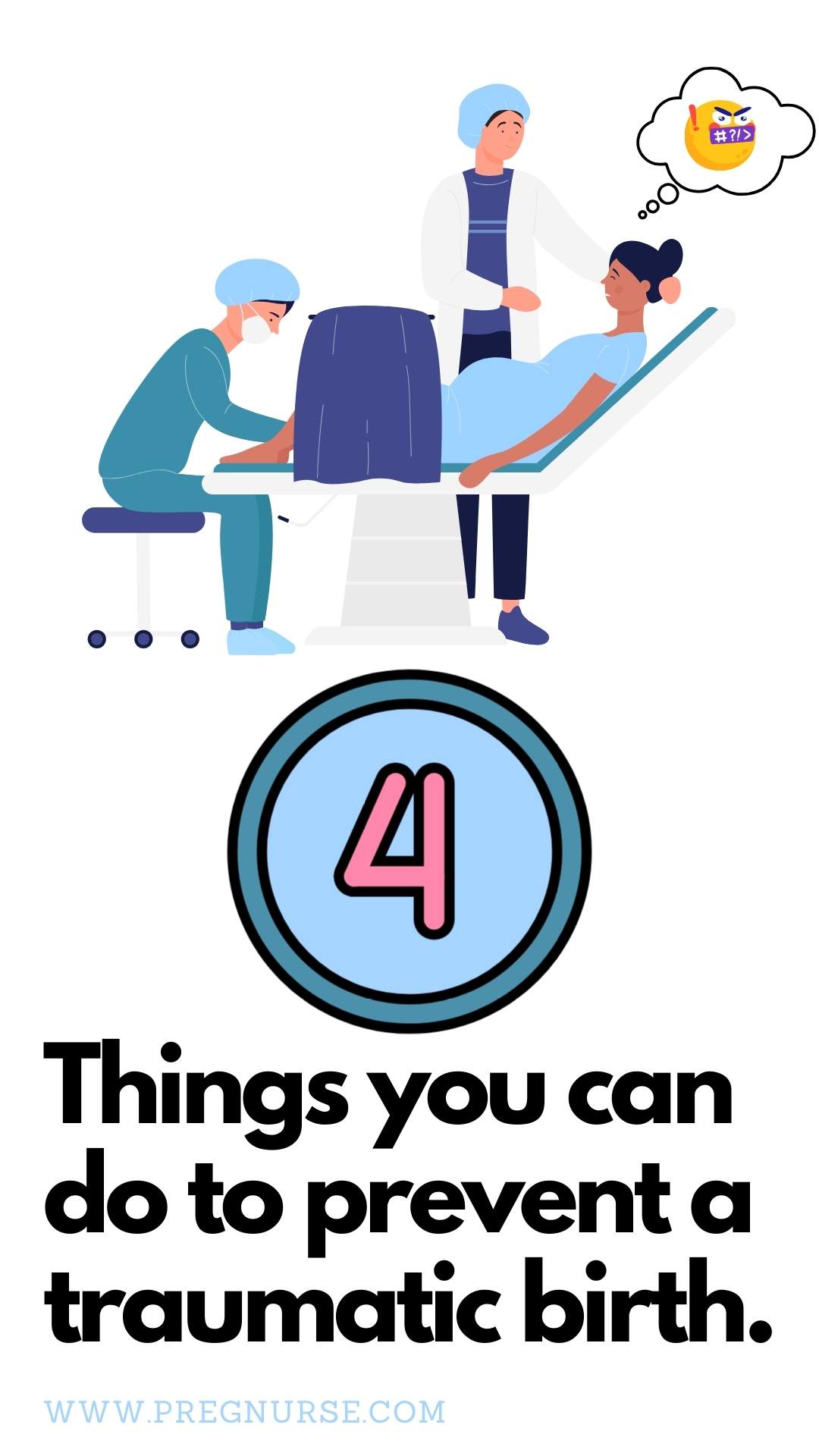
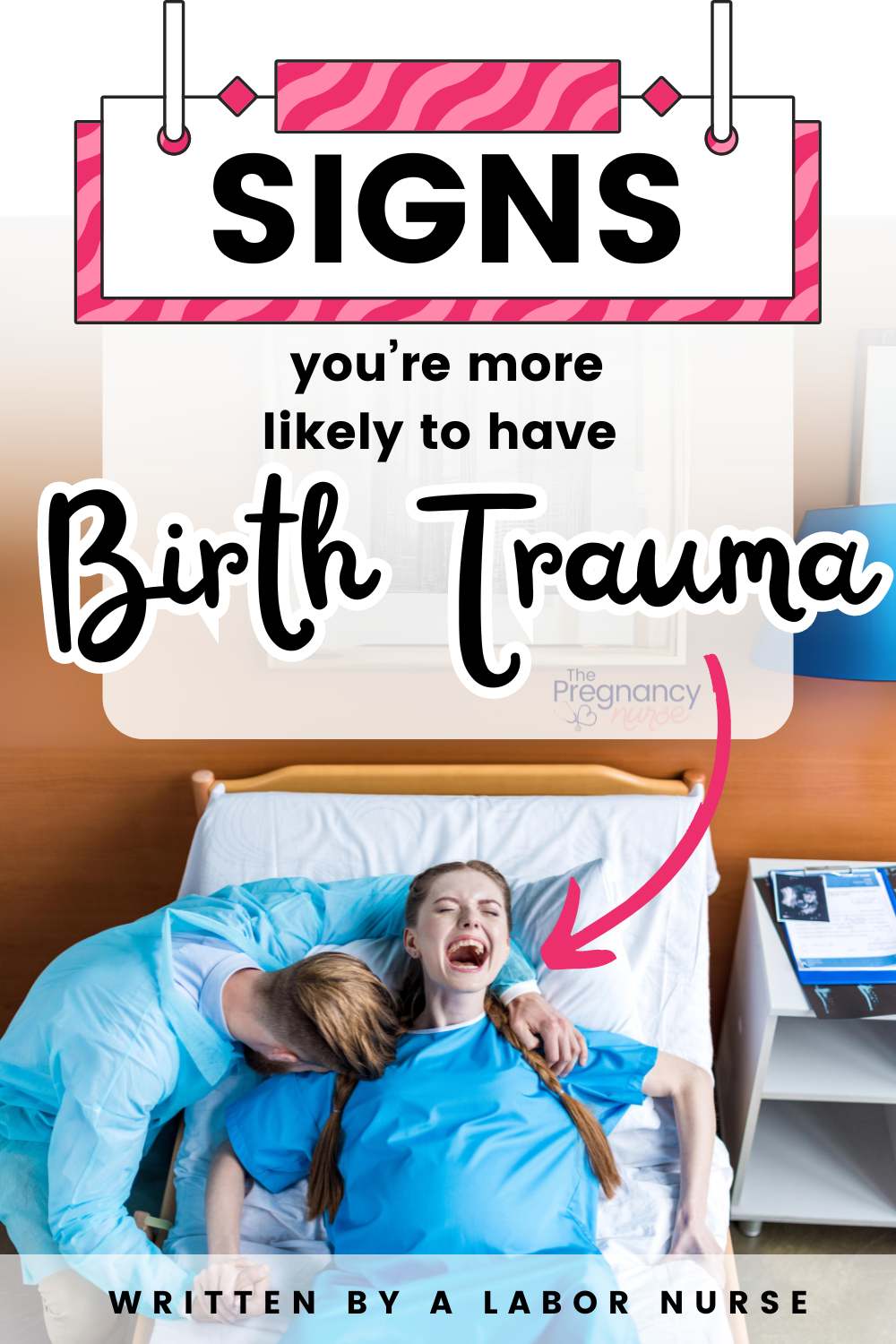




 Intermittent Auscultation: Who it’s for (and why it’s better)
Intermittent Auscultation: Who it’s for (and why it’s better)
